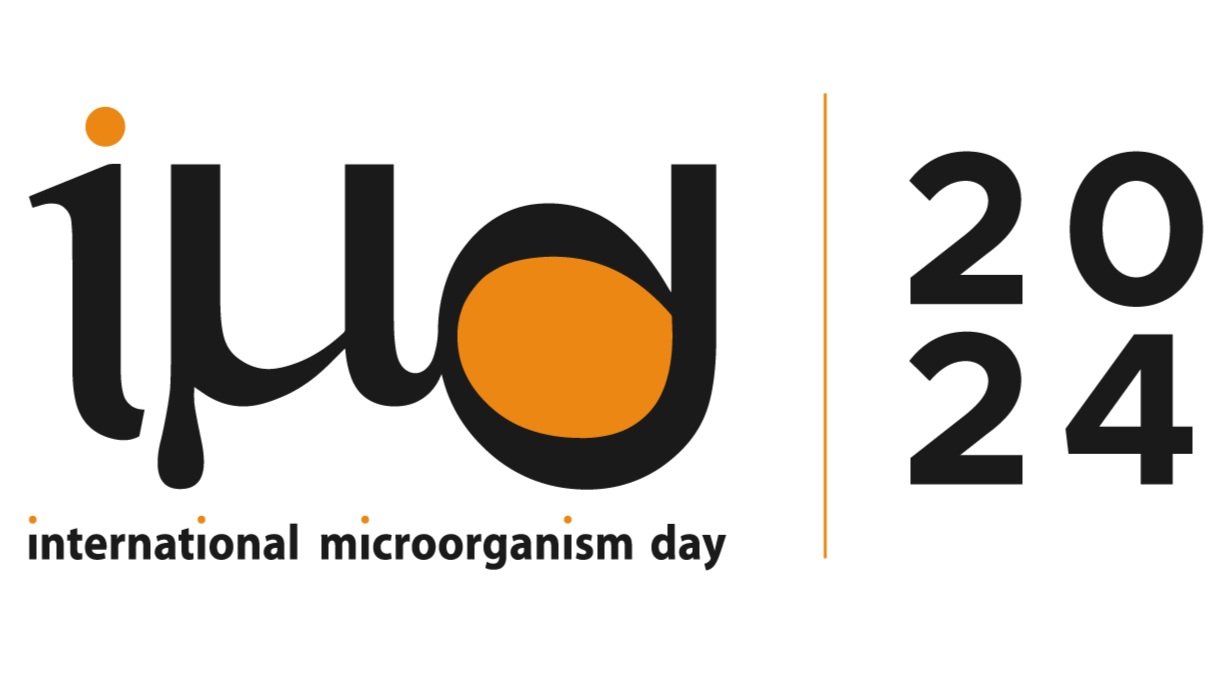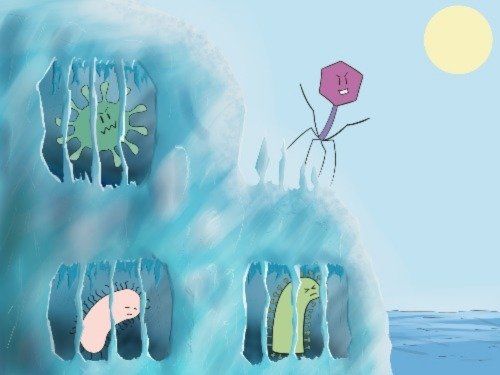Frozen Microbes: Glaciers as Archives of Ancient Microbial Life
Frozen Microbes: Glaciers as Archives of Ancient Microbial Life
By Tejaswini Petkar
We are all an unfortunate witness to the conspicuous melting of glaciers (Fun fact: there are 200,000 of these land-based glaciers on Earth!) as a result of climate change, bringing forth an array of consequences to us, our planet and its inhabitants, perhaps even at the cost of possibly losing an archive holding the secrets of microbes and phages that could be as much as 15,000 years old!
Created by Diego Pérez Stuardo
The quote: Everything is everywhere, the environment selects, is quite adept in showcasing the resilience and tenacity of those psychrotolerant (tolerant to the cold) microbial life that managed to eke out a living in those terribly chilly and inhospitable conditions, and this storehouse of mysterious invisible organisms which could be encompassing ancient life could certainly reveal so many survival hacks, that have been barely explored so far.
Moreover, some scientists are of the opinion that the presence of excess gases within the ice (methane, carbon dioxide, and nitrogen dioxide) could also indicate similar biological activity by microorganisms, being the major source of production of these gases. This means that despite the harsh environmental conditions, life may continue within the cryosphere as well.
On this note, P. Buford Price in his article (2007) claims that the [two] unusual properties of ice sustain life at sub-freezing temperatures. First, most of the present impurities are insoluble in ice crystals leading to a network of “veins” which microbes can utilize. Secondly, the part of ice in contact with the mineral surface remains unfrozen and thus acts as a habitat; after all, water always supports life.
In general, microbial activity within the glacier is assumed to shift with different locations, surface temperature and environmental factors. Glaciers differ from each other - for example through their physical and chemical compositions - and thus they influence (inevitably) the biological community present in them and those surrounding them.
Figure 2: An instance of the influence of microbial life, permafrost and climate change. Source: Himangshu Dutta and Angshu Dutta., 2016.
What is this discovery about?
In an effort to reveal similar microbes that may predict future climate changes, Zhi Ping Zhong and his team (2021), brought forward their study to shed light on interesting information about the concealed microbes that do lie within these glaciers, while renovating scientific methods to clear contamination from the ice core samples.
Obtaining glacier cores for sampling is not easy, as we know. There are indeed issues such as high expeditionary efforts and a high risk of sample contamination. Although these issues are adequately addressed and subsequently mitigated, there had not been much progress about the efficiency of removing viral contaminants so far, until Zhong and his team stepped in. These scientists performed artificial-ice-core “contamination” experiments to decontaminate the ice surface of the Guliya ice cap of the Tibetan Plateau.
What did they discover and how is it of value?
In their study, the researchers hoped to identify the primordial microbes that were either caged from the atmosphere at the time or deposited over time, by isolating those from the glaciers.
Their observations claim that there were diverse unique viruses in glaciers that were much higher than other environmental conditions such as oceans (52% unique genera) and soils (61% unique genera).
Janthinobacterium, Polaromonas, Herminiimonas, Flavobacterium, Sphingomonas, and Methylobacterium were the dominant bacterial genera. Within the ice core, the bacterial targets of the viruses were mainly Proteobacteria, Actinobacteria, Firmicutes, and Bacteroidetes; some of which are thought to be preserved for over 750,000 years!
Among their (various) discoveries, they further discovered 33 glacier viruses that were previously not recorded implying their novel discovery. Most viruses have very few similarities to their ancestors. Their ability to emerge from their ancestral lineages very fast hint towards a high evolutionary rate and rapid emergence of new strains.
In accordance with the belief that temperate viruses thrive more than virulent ones under harsh environmental conditions, temperate phages were found most abundant in glaciers: 3 times more, 8 times more, and 14 times more.
The pertained information gleaned included:
The possible origin of archived viruses (from soil and plants, or simply deposited over time)- where some scientists are already deciphering the importance of soil origin from microbes trapped in time in the cryosphere.
The role of their auxiliary metabolic genes (AMG), along with common microbial lineages observed from the glaciers.
Secrets that could reveal paleoclimate history, considering glaciers and their microbiome have been the witness to changes in environmental conditions from remote time.
On diving further into their work, they wanted to perceive the influence of the discovered phages on the metabolic machinery of their bacterial prey, which, let’s not forget, influenced the biogeochemical cycles when they were active at the time. In their journey, they found four auxiliary metabolic genes (AMGs). The first being concanavalin A- like lectin/glucanase, which associates with virus-encoded glycoside hydrolase, thus influencing carbon cycling through microbial carbon degradation. The second is sulfotransferase which plays a key role in cell communication and growth. And the last two are genes coding for MotA and MotB, which are the most recently noted genes to influence the cell flagella movement.
A few similar instances, perhaps?
A similar instance of microbial discovery corresponding with time is that of a study by Pamela A. Santibáñez and her team (2018). They showcased a record dating 2.7-9.6k years (!) back that depicted the presence of abundant prokaryotic cells from a deep ice core in West Antarctic. They found that fluctuations in the cell abundance were found to link with major climatic states: Last Glacial Maximum, Last Deglaciation, and Early Holocene periods.
Almost a decade prior (2006), Tandong Yao and his team worked on a 102m long ice core from the Malan Ice Cap on the Tibetan Plateau where they provided a list of trapped microbes inside. Their work also managed to link microbial abundance with dust storms.
Figure 3: Locations of the Malan ice cap and Guliya ice cap on the Tibetan Plateau. Source: https://agupubs.onlinelibrary.wiley.com/doi/pdf/10.1029/2004GB002424
In 2013, Caitlin Knowlton and her team found microbes and biomolecules trapped from Greenland and Antarctica ice cores up to 157, 000 years before present! Their work explained how the vitality of microbes present declined steeply with the aging of glaciers, while the presence of carbon dioxide and atmospheric dust encouraged their abundance.
On a final note …
The scientific work brought forward by Zhi Ping Zhong and his team is intriguing to scientists, policy makers, and the public alike in many ways. Broadly, their work shows how computational science has helped in mapping studies putting out theories and facts backed by data, overcoming many limitations of experimental work.
The discovery of the novel viruses by this work has provided enough information to have a glimpse of the sneaky viruses embedded deep within. Should they ever escape with the melting glaciers, we hope to be equipped, armed with the information gleaned so far.
A new path of possibilities has been opened to explore the wrapped mystery that lie deep within the cores- a key that could help finding tools to mitigate potential disasters that have already been arising with unpredictable climate behavior, and it is up to us to make good use of these secrets for a far more promising future from the unwrapping knowledge of our past.




